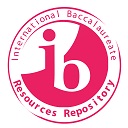Observation: Play at McDonald's
 The following is a sample Paper 3 that looks at a naturalistic observation. Below you will first find the stimulus piece, followed by the static questions. A copy of the mock paper is included to give students as an in-class assessment.
The following is a sample Paper 3 that looks at a naturalistic observation. Below you will first find the stimulus piece, followed by the static questions. A copy of the mock paper is included to give students as an in-class assessment.
Potential answers are included in the hidden boxes below.
Stimulus piece
Cheang (2002) studied a group of older adults at a fast food restaurant in Honolulu. Before he was able to begin the study, he obtained permission from the manager under the conditions that he 1) appear to be a paying customer, 2) not conduct any formal interviews or surveys on the premises, and 3) not interfere with the flow of business.
The researcher spent the first two weeks simply observing the behaviour of the regular customers. He then decided to focus on a specific group of about 26 adults, one of the larger groupings that came there frequently and was diverse with regard to gender and age.
The researcher sat at a table and eventually began talking to one of the group members. He was eventually introduced to other members of the group. They were friendly, but at first, viewed him as an outsider. He showed up every Tuesday and Thursday, and sometimes Friday, and soon became part of the group.
He observed the group in the setting for 2 or 3 days a week for 9 months. His initial observations entered discretely on index cards. To write longer notes, he went into a telephone booth or the restroom. The group soon became accustomed to his jotting notes on cards and paid little or no attention to it, returning quickly to the ongoing activities. His notes focused on the topics of discussion and the nature of the interaction among this group of friends. By the fifth month, several themes of behaviour and experiences emerged: sociability, play, and laughter. Findings suggest that: (a) older adults congregate at this fast-food restaurant to be with their buddies “to play”; (b) the group is fun for members and there is a lot of laughter; and (c) group membership in this restaurant provides structure, meaning, and opportunities for these older adults to engage in personal expression.
In month 6 he shared his observations and the themes with group members and interviewed them with regard to their perceptions of the themes that were generated from his field notes. They agreed with him that this was, indeed, how they felt about their frequent visits and the time they spent together.
Cheang, Michael (2002), "Older Adults' Frequent Visits to a Fast-Food Restaurant: Nonobligatory Social Interaction and the Significance of Play in a Third Place," Journal of Aging Studies, 16 (August), 303-21.
Questions
1a. Identify the method used and outline two characteristics of the method.
This is a naturalistic, participant observation. Naturalistic observations have high ecological validity. It is in a natural environment so people should be acting as they would in "the real world." In addition, there is no control over variables. This means that no cause and effect relationship can be determined, but also there are several variables that could influence the study. For example, the number of customers could increase because of seasonal changes and the behaviour of the group could change.
This is also a participant observation. In a participant observation, the researcher joins the group that is being observed, rather than observing from a distance. This allows the researcher to get a better understanding of what is happening in the group. It allows him to ask questions and clarify situations. It also allows him to develop empathy for the group that is being studied.
1b. Describe the sampling method used in the study.
1c. Suggest an alternative or additional research method giving one reason for your choice.
The researcher could use a questionnaire, a focus group or structured interviews.
A questionnaire would allow the researcher to get data from each individual about their reasons for being part of the group. It would be an efficient way to do this, collecting a lot of data over a short period of time. However, as the observation in this study took place over several months, a questionnaire would only give a snapshot of information for that particular day and may not represent the overall reasons why someone would be a member of this group.
A focus group would allow the participants to share their thoughts in a normal discussion format and it would be possible to confirm in the group whether reasons for joining the group are commonly shared or individual justifications. This could, of course, also lead to conformity effects.
Structured interviews would allow the researcher to hear individual voices without potential conformity effects that could potentially result from a focus group. Structured interviews are also highly standardized, making it easier to analyse the data as all participants would be asked the same questions.
2. Describe the ethical considerations that were applied in the study and explain if further ethical considerations could be applied.
There are two chief concerns with this study. First is the use of deception. Although consent was obtained from the restaurant, there was no informed consent from the group members. They believed that the researcher was their friend. However, as this took place in a public space, researchers are not required to obtain informed consent. Secondly, the debriefing was essential here. The researcher had to reveal the deception. He also then had to give the participants the right to withdraw their data. It is questionable whether there could be "undue stress or harm" as a result of feeling deceived. As part of the organization of this study, the researcher would have had to get the study approved by an ethics panel. It is clear that the panel did not feel that undue stress would result from the study. It would be important for the researcher to maintain the anonymity of the participants in the group. This includes not only that the names of the participants could not be used - i.e., that pseudonyms would be used - but also that details would not be used that would reveal the identity of an individual.
3. Discuss how a researcher could ensure that the results of the study are credible.

 IB Docs (2) Team
IB Docs (2) Team
